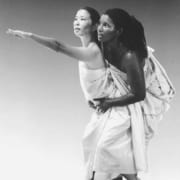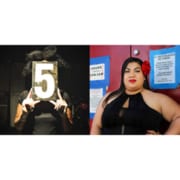FACE by Jonathan D. Katz
FACE: An Introduction by Jonathan Katz
We have long recognized the mutability of that seemingly biologically determinate aspect of being we call our face–and I’m not talking about the relatively recent medium of plastic surgery. We say that someone is “putting on a good face” or that they have “lost face.” We know instantly what Madonna meant when she informed us that Rita Hayworth gave good face. T.S. Elliot, himself no slouch at lyrics, wrote that “we prepare a face to meet the faces that we meet.” In short our face is not always that physiological given the ordinary use of the term implies. Indeed, a face can be understood as a self-conscious self-presentational strategy, a construction of ourselves we present to the world.
For queer people especially, the presentation of face was given remarkable value. In the right context, your face could get you friends, lovers, community; in another context, it was transformed into a mask, a necessary camouflage before a hostile world. Thus, queer faces historically incorporated the idea of mobility, fluidity and flux, expertly becoming a parade of masks and personae when the situation demanded–and it usually did. All faces of course perform identities for public consumption at various points; it’s just that queers grew expert at this process of changing faces or risked grave peril.
Now, in this age of increasing political activism, discarding our masks has become a cliche of queer liberation. We seek to show our faces as a choice means and method of our ultimate emancipation. But even within this new political context, to show our face is hardly a simple act. To understand the face as the natural, singular immutable essence of identity belies all the experiences and painful lessons that have gotten queers to this point in our history. We know all about faces and their rich vocabulary of performative postures: arched eyebrows, drawn lips, studies interest, exasperated dismissal, wide eyed innocence. (A good drag queen can run through that litany forwards and backwards in the space of thirty seconds.) Now that we can show our face only begs the question of which faces do we show. It is a question which cuts to the very core of our self-definition–as individuals and as communities. Face is not the end of a struggle, but rather its beginning.
Jonathan Katz © 1998



